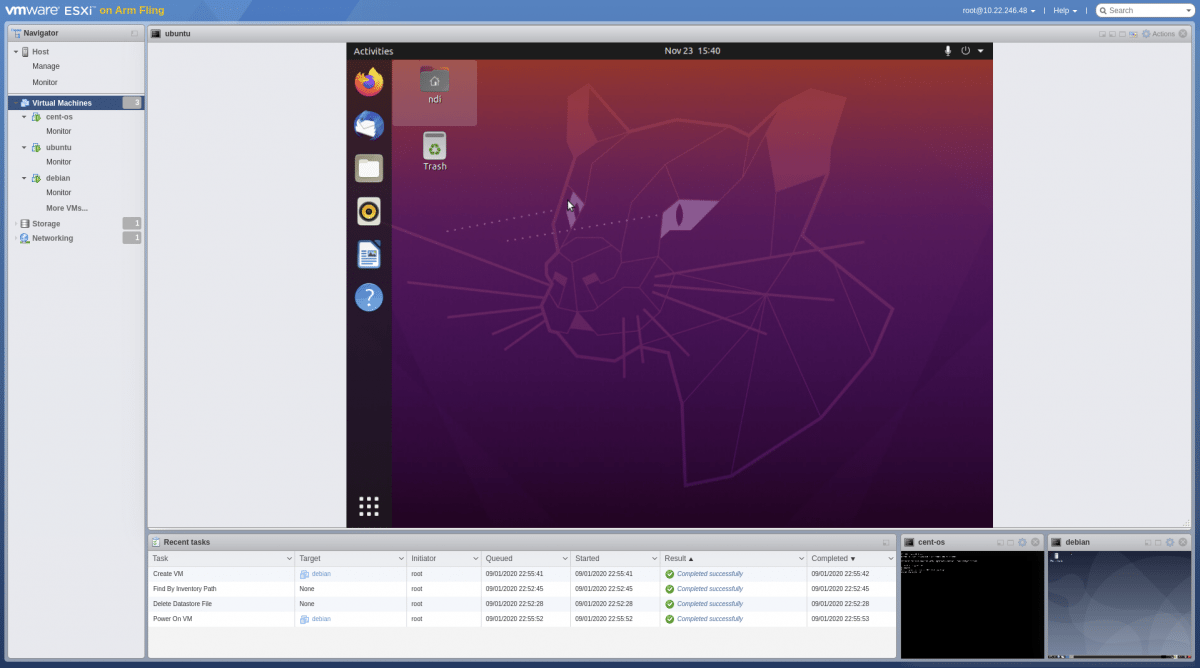Virtualization in small format: VMware ESXi for the Raspberry Pi
Source: Heise.de added 28th Nov 2020The hypervisor VMware ESXi, which is widespread on x 86 – servers for the provision and management of virtual machines (VMs) should also be used in the future Servers with ARM processors are running. A Raspberry Pi 4 is sufficient to gain experience with ESXi on ARM. VMware provides ESXi for ARM devices as part of the “Fling” program. VMware refers to new applications and tools as “Fling” that are not yet intended for productive use. According to the company, the aim is to make new technology available to developers and to obtain feedback on potential products.
For developers and hobbyists VMware introduced ESXi for ARM devices for the first time in the year 2018 publicly. With the ESXi ARM edition that has just been released, users can only virtualize systems that are designed for ARM processors. So it is not possible for x 86 – or x 64 – to set up guest systems programmed with processors. The ESXi-ARM-Edition for the Raspberry Pi also only runs in “evaluation mode”. After a period of 180 days, the software can no longer be used.
Access to the hypervisor takes place via the ESXi web interface or an existing vCenter server. There, after creating a data store for ISO images, virtual machines can be created and managed. This works with the ARM variants of Linux distributions such as Ubuntu, CentOS and Debian without any problems.
As VMware employee William Lam demonstrates in his blog, a guest system with Raspberry Pi can also be created with a few tricks OS can be virtualized in ESXi. Practical for developers and hobbyists: For new projects, you don’t always have to write a fresh system to the Raspi SD card. Instead, virtual machines can be used as test environments.
Anyone who wants to run several Raspi projects virtualized with ESXi on one Raspberry Pi has to put in some effort.
Multi-stage installation For ESXi on the Raspi 4 recommends VMware the 8 GB version
(Image: c’t magazin)
VMware recommends the Raspberry for using the ESXi-ARM-Edition Pi 4 in the variant with 8 GB of RAM. The installation on the 4 GByte Raspi 4 is possible.
Before the installation you have to update the EEPROM of the Raspi; that works under Raspberry Pi OS. In order for the ESXi installation program to start from a USB stick, you must first write and configure an adapted UEFI firmware on the SD card.
A PDF document in which all requirements and installation steps are documented can be downloaded from the ESXi ARM Edition website. To access the ISO image for installation, you have to register free of charge with VMware beforehand.
(ndi)
brands: Raspberry Pi media: Heise.de keywords: OS Server Software
Related posts
Notice: Undefined variable: all_related in /var/www/vhosts/rondea.com/httpdocs/wp-content/themes/rondea-2-0/single-article.php on line 88
Notice: Undefined variable: all_related in /var/www/vhosts/rondea.com/httpdocs/wp-content/themes/rondea-2-0/single-article.php on line 88
Related Products
Notice: Undefined variable: all_related in /var/www/vhosts/rondea.com/httpdocs/wp-content/themes/rondea-2-0/single-article.php on line 91
Warning: Invalid argument supplied for foreach() in /var/www/vhosts/rondea.com/httpdocs/wp-content/themes/rondea-2-0/single-article.php on line 91
